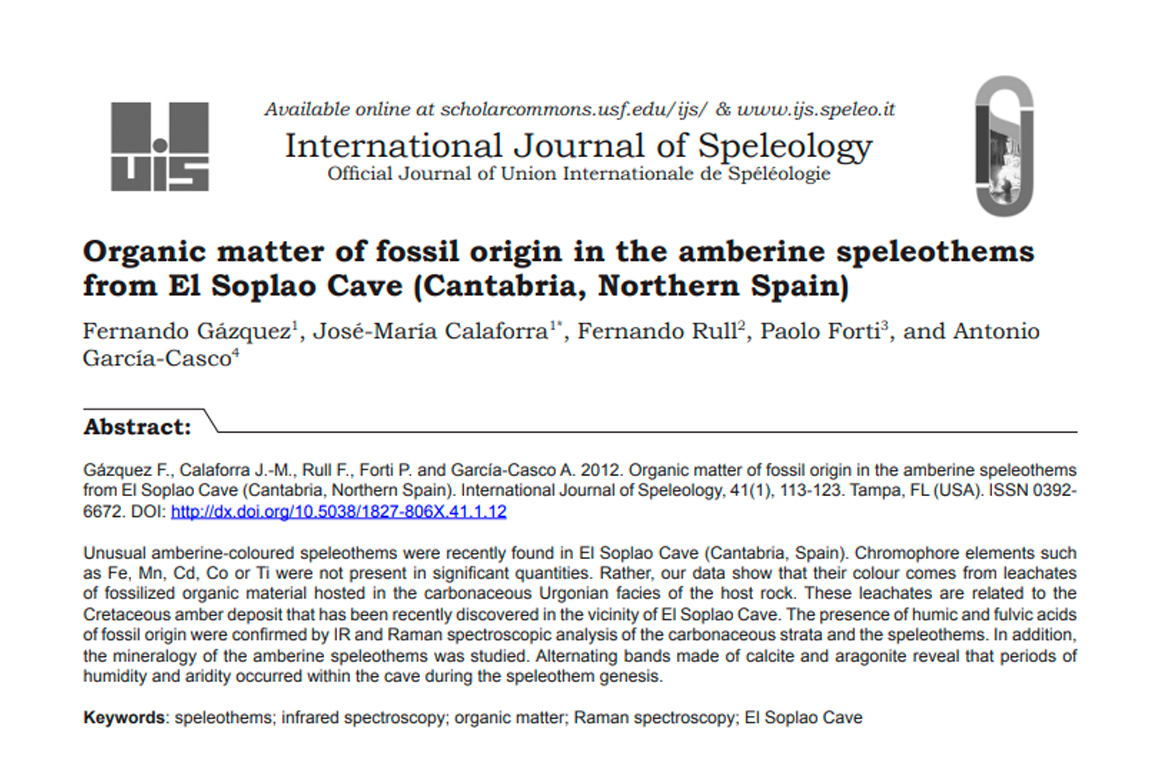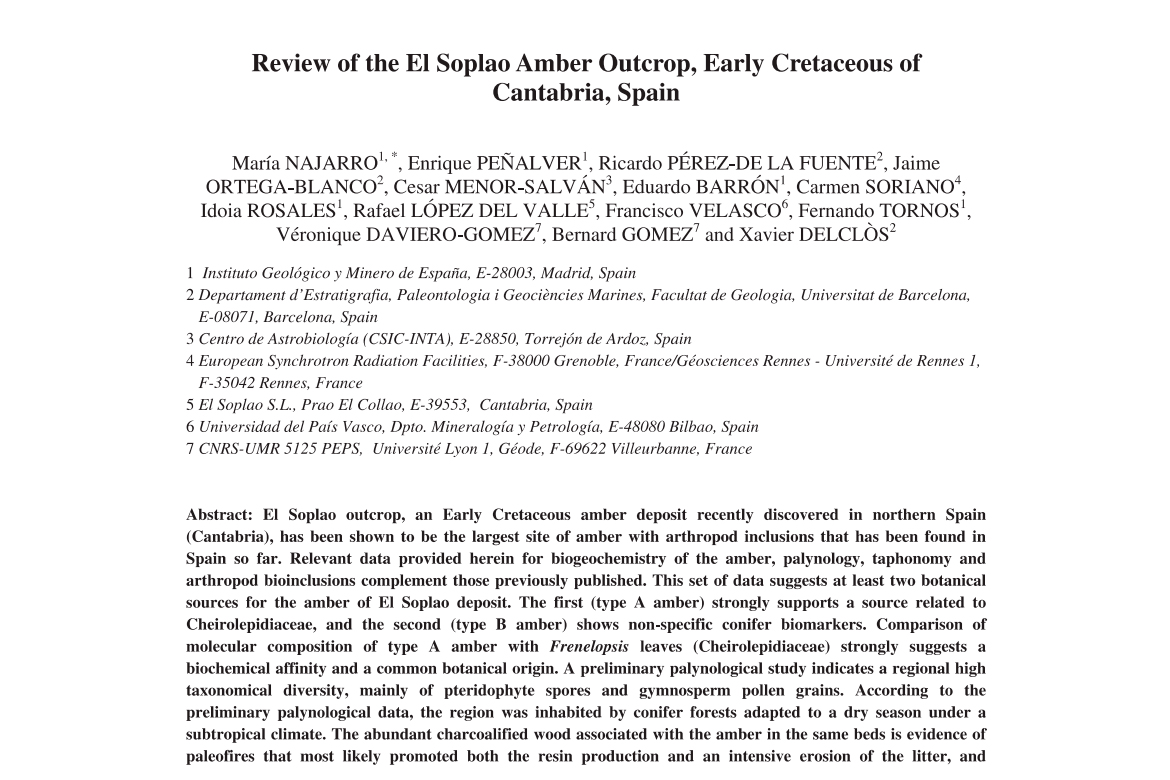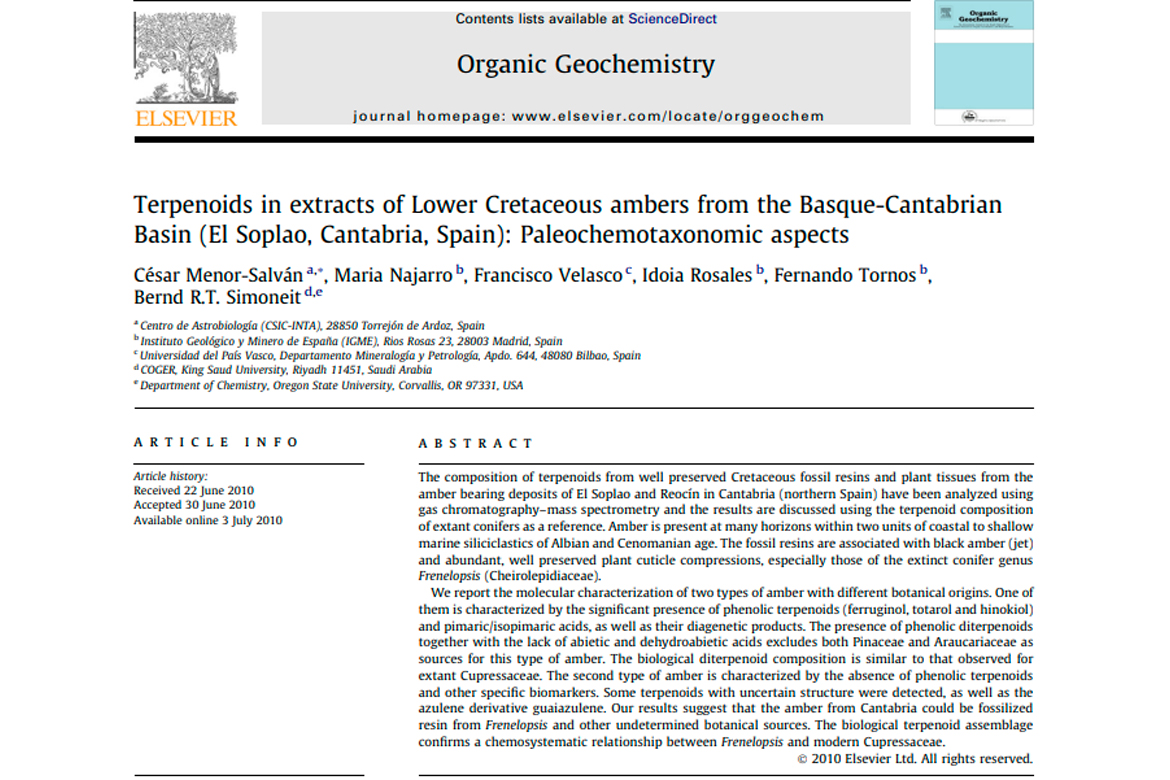Abstract:
Gázquez F., Calaforra J.-M., Rull F., Forti P. and García-Casco A. 2012. Organic matter of fossil origin in the amberine speleothems from El Soplao Cave (Cantabria, Northern Spain). International Journal of Speleology, 41(1), 113-123. Tampa, FL (USA). ISSN 0392- 6672. DOI: http://dx.doi.org/10.5038/1827-806X.41.1.12
Unusual amberine-coloured speleothems were recently found in El Soplao Cave (Cantabria, Spain). Chromophore elements such as Fe, Mn, Cd, Co or Ti were not present in significant quantities. Rather, our data show that their colour comes from leachates of fossilized organic material hosted in the carbonaceous Urgonian facies of the host rock. These leachates are related to the Cretaceous amber deposit that has been recently discovered in the vicinity of El Soplao Cave. The presence of humic and fulvic acids of fossil origin were confirmed by IR and Raman spectroscopic analysis of the carbonaceous strata and the speleothems. In addition, the mineralogy of the amberine speleothems was studied. Alternating bands made of calcite and aragonite reveal that periods of humidity and aridity occurred within the cave during the speleothem genesis



